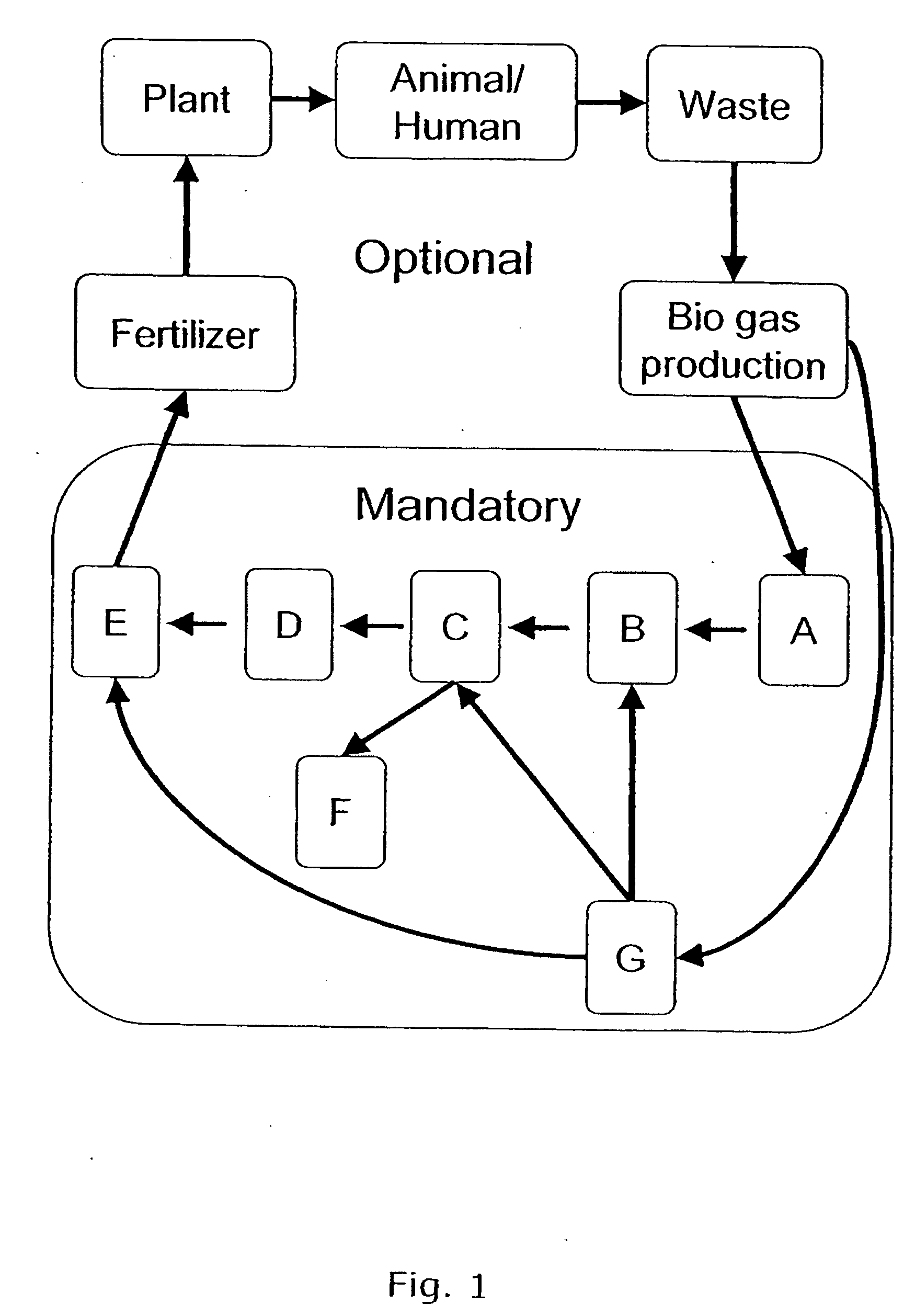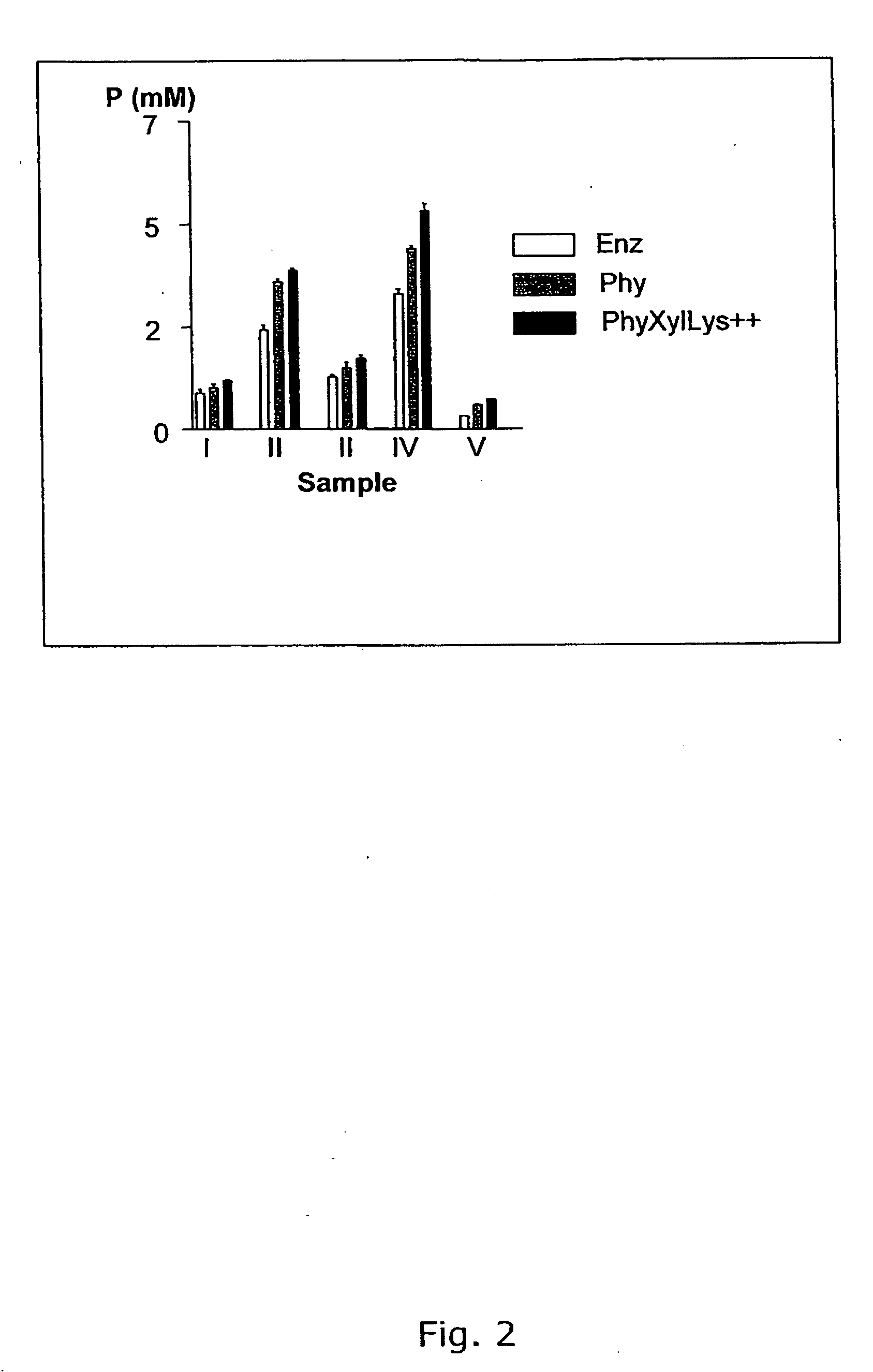Method for recycling important nutritional elements from waste
a technology of important nutritional elements and waste, which is applied in the field of recycling important nutritional elements from waste, can solve the problems of increasing the risk of washing out nutrients, spreading diseases, and increasing the handling problems of human, animal and industrial waste materials
- Summary
- Abstract
- Description
- Claims
- Application Information
AI Technical Summary
Benefits of technology
Problems solved by technology
Method used
Image
Examples
example 1
Process for Releasing Nutritional Elements from Pig Manure
[0085] Manure from pigs is separated and 100 g of the solid fraction is suspended in 1 litre of water at room temperature and during constant stirring. After 2 hrs, an enzyme cocktail is added and the suspension is incubated for additional 8 hrs at 40° C. under constant stirring (100 rpm) of the suspension. The enzyme cocktail is composed of phytase (10,000 units / kg), beta-glucanase (35,000 units / kg), cellulase (11,000 units / kg), xylanase (400,000 units / kg), protease (0.25%), lipase (0.1%) and amylase (3,300,000 units / kg). After total of 10 hrs, 0.75% magnesium oxide and 0.3% NH3 is added to the suspension for struvite formation, the stirring is stopped and the incubation is continued for another 2 hrs. Thereafter another 0.3% magnesium oxide and 0.4% NH3 is added and the suspension is left for an additional 8 hrs where after the suspension is filtered and the liquid is stored to be used in fermentation processes. At this st...
example 2
Process for Releasing Nutrients from Different Waste Materials
[0086] The effect of the addition of the enzyme phytase or an enzyme cocktail of phytase, xylanase and lysing was tested in different waste materials, including in non-separated waste material and in the solid fraction of such waste materials.
[0087] 2.1 Materials and Methods
[0088] The experiments included five waste materials: [0089] (I) untreated pig manure from fatteners, i.e. containing both a solid and a liquid fraction; [0090] (II) solid fraction produced by separating the pig manure from fatteners (I) with a decanter centrifuge; [0091] (III) untreated pig manure from fatteners, i.e. containing both a solid and a liquid fraction; [0092] (IV) solid fraction produced by separating the pig manure from fatteners (III) and adding flocculants and coagulants to the manure combined with dewatering in a belt press band separator; [0093] (V) slaughterhouse meat waste with a consistence similar to minced pork.
[0094] From ea...
PUM
| Property | Measurement | Unit |
|---|---|---|
| pH | aaaaa | aaaaa |
| temperature | aaaaa | aaaaa |
| temperature | aaaaa | aaaaa |
Abstract
Description
Claims
Application Information
 Login to View More
Login to View More - R&D
- Intellectual Property
- Life Sciences
- Materials
- Tech Scout
- Unparalleled Data Quality
- Higher Quality Content
- 60% Fewer Hallucinations
Browse by: Latest US Patents, China's latest patents, Technical Efficacy Thesaurus, Application Domain, Technology Topic, Popular Technical Reports.
© 2025 PatSnap. All rights reserved.Legal|Privacy policy|Modern Slavery Act Transparency Statement|Sitemap|About US| Contact US: help@patsnap.com


